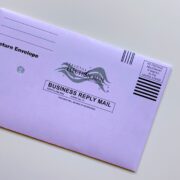
Preference for in-person voting drops amid COVID-19
As the presidential election looms just over a month away, the likelihood that the coronavirus pandemic will be gone in time for voters to hit the polls becomes more of a stark impossibility.
Voting by mail is poised to be the more primary option for voters across the country to avoid interacting with others in the age of face masks and social distancing.
But in California, where there are several underserved communities with low voter outreach, policy experts are encouraging greater community outreach to raise awareness of alternative voting options.
“The big challenge is that, because voting will be changing for everyone in California regardless of where they live we should be thinking about our reasons to adapt,” Karthick Ramakrishnan, public policy and political science professor at UC Riverside, said during a webinar hosted by the Los Angeles County Office of Immigrant Affairs on Thursday, Sept. 17.
Ramakrishnan shared findings from a study that was designed to gauge the attitudes and voting behaviors of “low-propensity voters,” or registered voters that are the least likely to participate in elections.
The study included 88 Asian American and Pacific Islander (AAPI) participants throughout California, and it concluded there is a “strong preference” to vote by mail this election due to the COVID-19 pandemic.
Though the study culled information from a small sample size, the researchers disaggregated the data among the most prominent AAPI groups and found that among Filipino American voters, 4 out of 9 Filipinos and native Tagalog speakers usually vote in-person.
According to the study, Filipinos who are ESL speakers (like other ESL speakers of different origins) prefer using the language assistance available at the polls.
But for the upcoming election, only about 2 out of 9 Filipinos plan to vote in person, meaning that a majority of Filipino voters will likely vote by mail or utilize one of the many ballot drop-off locations throughout the state.
At a time when President Donald Trump is routinely denigrating the vote-by-mail option and encouraging voters to cast their ballots at the polls, one of the biggest challenges lies in ensuring communities and low-propensity voters that mail-in ballots are still a viable option to participate in the election. (Trump himself has voted-by-mail throughout his presidency.)
In terms of bridging that information gap between government agencies and various ethnic communities, the most trusted sources include traditional and ethnic media, social media, community organizations and family and friends. Understanding the trusted channels, Ramakrishnan noted the importance of these sources to provide accurate and safe information.
Social media, particularly Facebook, has been found to allow the dissemination of misinformation regarding the elections, following the Russian tampering of the 2016 election through social media. Minority communities that primarily receive information through social media are particularly vulnerable to being misinformed.
“It really shows the importance of having good information readily available from these trusted sources,” Arturo Vargas of the Latino-based NALEO Educational Fund said on Thursday. “The partnership between the county and these community organizations is so important because we have to make sure that voters and families of voters feel like they can trust the information they’re getting from the county because it’s being validated by these trusted organizations.”
Mail-in voting still holds the highest interest among voters, Ramakrishnan said, but the concerns over delivery and whether or not their votes will be counted in time remain. There’s also great interest in the availability of drop-off boxes, which are locations where voters may drop their mail-in ballot off before Election Day.
But Ramakrishnan pointed to the community efforts on issues like the 2020 Census, wherein immigrant advocacy organizations have extensively provided census survey support and assistance to households across LA County.
“I think there is a lot of trust that has been built up and this is where I think a lot of engagement on the census has shown that these kinds of partnerships between county government agencies and community partners to make sure everyone gets counted,” Ramakrishnan said.
He added, “Even if someone does not fully trust government, the strong partnership of community partners — including organizations like CHIRLA [Coalition for Human Immigrant Rights – Los Angeles], many of these AAPI rights and immigrant rights organizations — has gone far to bridge local governments with these communities.”






